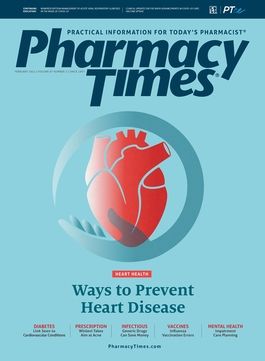Awareness, Education Are Key When Prescribing Generics for Infectious Diseases
Cost-conscious guidelines, government regulation, market-level incentives can ensure access, help patients save money.
Although brand name drugs for infectious diseases are expensive, purchasing some generic options without patent exclusivity also has proved costly for patients.
As a result, experts say that increased awareness and education, cost-conscious guidelines, government regulation, and market-level incentives can help ensure access for patients with infectious diseases and help them save money.
The United States spent 17.8% of its gross domestic product on health care in 2016 compared with between 8% and 12% in comparable developed countries, according to a recent article in The Journal of Infectious Diseases.
The authors attributed much of this to high drug costs, which also contribute to a lack of patient adherence. In 2016, 18% of Americans did not fill a prescription because of high drug costs, they said.
In addition to high costs, the authors pointed to a lack of awareness and perceived lack of responsibility among health care providers to control these costs. For example, in a random sample of nearly 3000 physicians in the American Medical Association, just 36% said that physicians have a major responsibility to reduce health care costs, and only 23% said they were aware of the cost of tests and treatments that they prescribed.
Finally, the authors pointed out that a scarcity of guideline recommendations focused on cost containment fuels the lack of awareness among providers; among a series written in 2009, very few guidelines offered detailed or explicit recommendations about reducing costs.
“While health care expenditures soar and inequitable access persists, perpetuating poor population outcomes, physicians, governmental agencies, and clinical guideline committees have largely remained unaware of the key role they have to play,” the authors wrote.
The report examined several brand name drugs that play major roles in infectious disease management: the combination emtricitabine and tenofovir disoproxil fumarate (Truvada; Gilead), linezolid (Zyvox; Pfizer), and sofosbuvir (Sovaldi; Gilead).
Linezolid is an antibiotic used to treat resistant gram-positive pathogens, including penicillin-resistant pneumococci and vancomycin-resistant enterococci (VRE).
As of 2004, there were 3 drugs on the market to treat VRE, ranging in cost from $72 to $255, according to the authors. Linezolid costs were on the lower end of that range, though at the time it was the only orally available option.
Several analyses found that linezolid was a cost-effective or even cost-saving option. However, these analyses were conducted from the payer perspective and did not take into account individual patient affordability, the authors said. When the patent expired in 2015 and generic options entered the market at $138 for a 2-week course, the authors found that Pfizer’s profits plummeted, though the price may still not be affordable for many patients.
Sofosbuvir is widely used for the treatment of hepatitis C, which affects about 5.3 million Americans and 170 million individuals worldwide. Development began in 2004, and the drug was sold to Gilead Sciences in 2012, before being launched in 2014. At the time, a 12-week treatment course in the United States cost about $84,000 compared with an estimated $28,000 in Portugal and $53,000 in the United Kingdom.
As new competitors have entered the market, the authors said prices have fallen slightly. As of 2018, the cost of treatment for hepatitis C is as low as $55,700 for a 12-week course.
Finally, emtricitabine/tenofovir disoproxil fumarate has become an essential preexposure prophylaxis (PrEP) option for patients with potential exposure to HIV. Since the drug’s FDA approval in 2004, its price has increased 2.5-fold, and is now an estimated $20,000 per year.
The authors did say that although some have argued that PrEP use is limited by costs, investigators of a recent CDC paper found that fewer than 1% of those patients with indications for PrEP need financial assistance.
The authors concluded that clinical programs should incorporate didactic sessions about costs, and value rounds could help bring attention to cost issues in day-to-day practice. With more awareness, prescribing patterns could shift toward cost-conscious and cost-saving trends.
REFERENCE
Costantini S, Walensky RP. The costs of drugs in infectious diseases: branded, generics, and why we should care. J Infect Dis. 2020;221(5):690-696.doi:10.1093/infdis/jiz066

